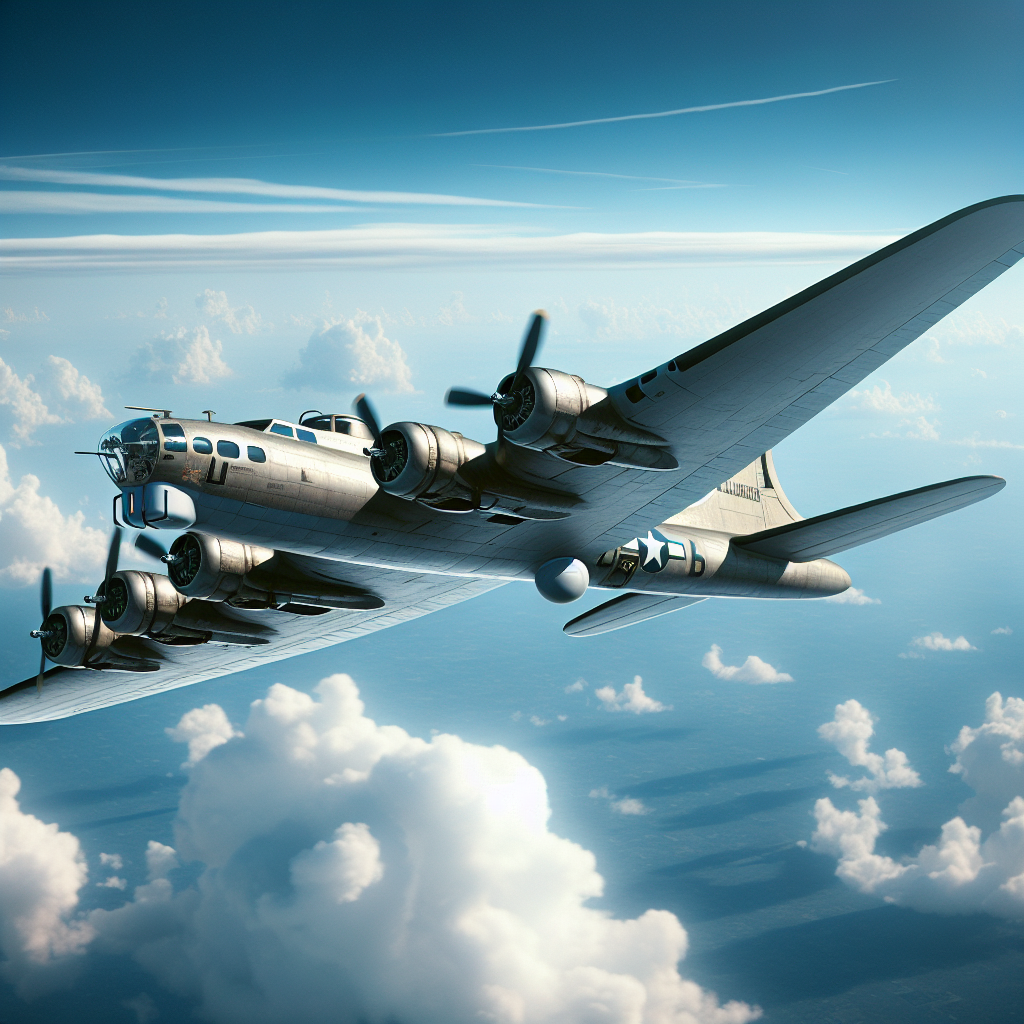Known historically as the 'Queen of the Skies,' the B-17 bomber roared its way into the pages of history during World War II, a time when courage was currency and victory was non-negotiable. Piloted by fearless American aviators, this windy-haired metal beast first took flight in the 1930s and wowed military strategists with its incredible resilience and firepower. Designed by Boeing in the United States, the B-17 quickly became the Allies' ace in the hole. Why, you ask? Well, it was robust, intimidating, and could cover a vast 2,000 miles bombarding important targets deep into enemy territory. If you want to grasp the true meaning of heroism, look no further than the B-17.
An Engineering Marvel: With its 74-foot length and 104-foot wingspan, the B-17 Flying Fortress was a sight to behold. Boasting up to 13 machine guns and a bomb load of up to 8,000 pounds, it became a formidable airborne fortress. Its four mighty Wright R-1820 Cyclone engines didn't just power the airplane—they symbolized brute strength and American engineering prowess. Boeing didn’t build this bird for the faint-hearted; it was created to instill awe.
Freedom in the Air: This wasn’t just a plane; it was a manifestation of freedom with wings. As American boys boarded these steel giants, they were not just carrying bombs; they were carrying the ideals of liberty and democracy. It’s a chapter in history that some might erase but let’s face it, these Mad-Max aviators made it their mission to protect the free world.
Indomitable Spirit: The B-17 was anything but a complacent contraption lazing in the sky. It was built to endure punishing fire and navigate vicious weather. One of the most famous B-17s, the Memphis Belle, survived 25 combat missions over Europe. This was an aircraft that embodied resilience, cementing its place as an enduring symbol of the determined American spirit.
Elevating American Valor: Each B-17 was manned by a crew of men whose stories of bravery and fortitude float in the annals of military valor. They flew into firestorms of enemy artillery to keep tyranny at bay. They were the unsung cowboys of the skies, kicking open the doors to Allied victories. Despite their trials, they soared, driving forward the unyielding American resolve to stamp out evil.
Playing Offense and Defense: The skies during World War II were no tranquil theater of clouds and azure vistas. No, they were warpaths. The B-17 was designed to be both the linebacker and quarterback of the air offensives. It wasn’t just offensive; it had a low tolerance for enemy meddling—hence its overwhelming array of machine guns. It fended off fighter planes with an aggression that was the bane of its adversaries.
Symbol of American Supremacy: While some folks today might shudder at the idea of American exceptionalism, let the B-17 be an overwhelming reminder. This aircraft didn’t just win battles; it was a testament to American ingenuity and superiority. It claimed the skies, not with meekness, but with unyielding determination.
Inspiring the Nation: During the dire times of war, the flying fortresses became beacons of hope for citizens back home. War bond drives and recruitment rallied around the tales of the B-17's victories. They were psychological boosts, encouraging a spirit of unity and perseverance, a true representation of the powerhouse America was becoming.
Cost of Victory: While it was a marvel of wartime engineering, the B-17 also highlighted the heavy human cost of victory. Thousands of these planes were built, and many did not return. But for every plane that fell, the soldiers' bravery soared. These young men were warriors, not victims, unwilling to budge an inch on the frontline of defending liberty.
Technological Advancements: As World War II waned, the B-17's role morphed from combative force to a harbinger of aeronautical progress. It was a stepping stone to more advanced designs, casting a long shadow into modern aviation. Today's jets might whiz by with their stealth tech, but they owe a nod to the groundbreaking feats of their brash B-17 ancestors.
Legacy: The legacy of the B-17 Flying Fortress is beyond dispute. As warbirds go, it’s had a perennial influence in both military and cultural arenas. Not only did it help secure a triumph over forces that sought to quash freedom, but it etched a permanent message in the storybook of history, reminding us that courage is the keystone of all liberty.
Today, the B-17 remains the idol of many aviation enthusiasts and historians. Its grandeur doesn't just fade into a distant memory; it blazes a trail, torching a way for patriotism to continue soaring unhindered. While some might grumble about glorifying this iconic warplane, it's indisputable that its name is written with loyalty, pride, and American audacity.

